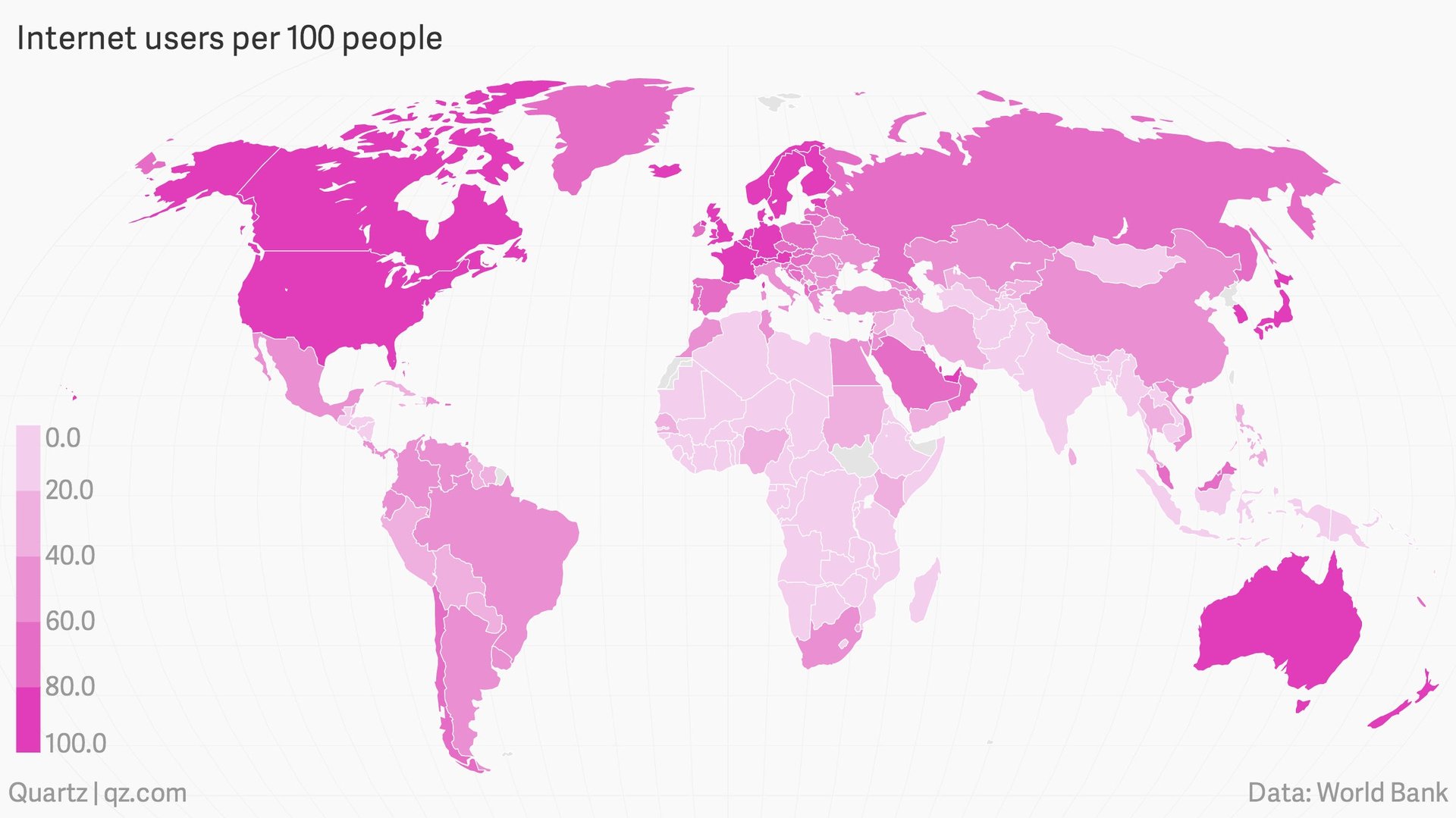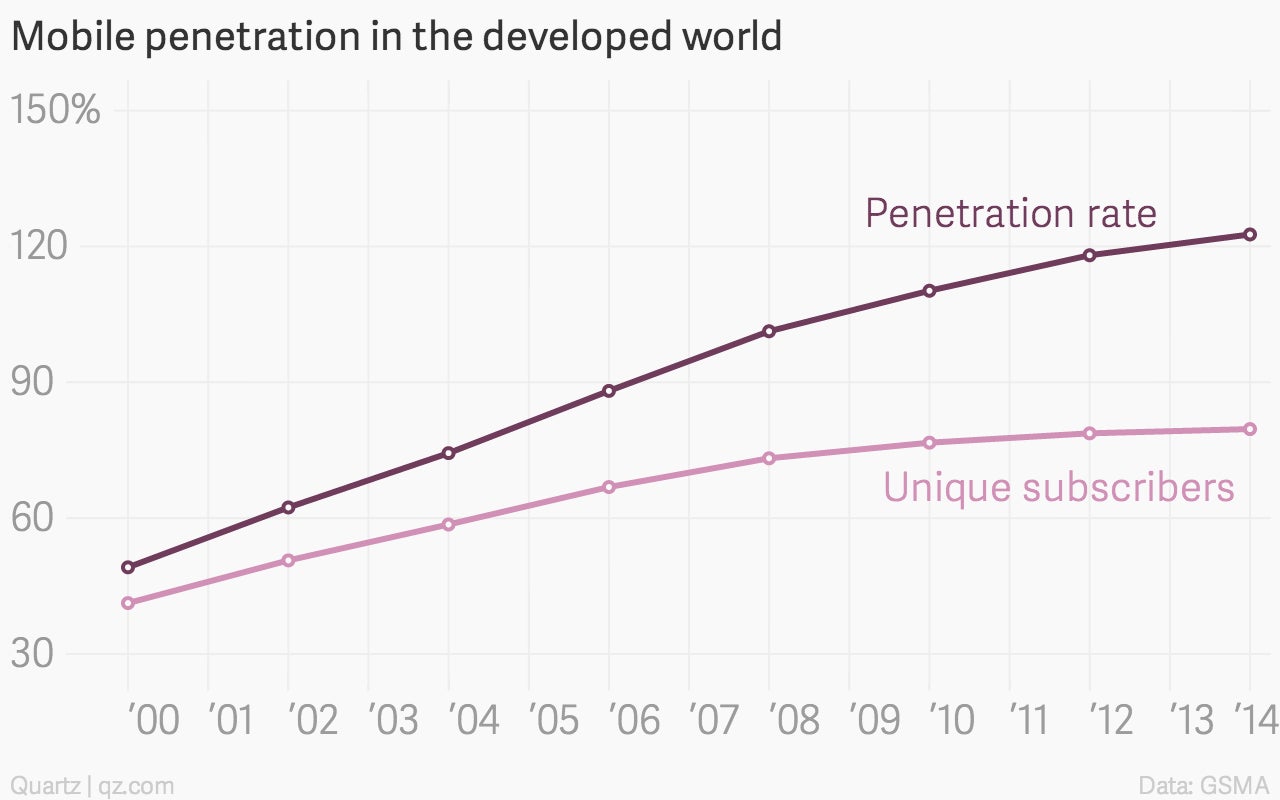We’re counting the world’s unconnected billions all wrong
One hundred is a deceptive number. In the rich world, mobile phone penetration, measured by the number of active SIM cards, exceeds 100%. That would imply that not only does every man, woman, and child have a mobile phone, but that some of them have two. In fact, the real rate of penetration, even in the developed world, is closer to 80%.


One hundred is a deceptive number. In the rich world, mobile phone penetration, measured by the number of active SIM cards, exceeds 100%. That would imply that not only does every man, woman, and child have a mobile phone, but that some of them have two. In fact, the real rate of penetration, even in the developed world, is closer to 80%.

Measuring internet penetration seems at first more straightforward. This is calculated as the number of internet users per 100 people in any given country, not the number of internet connections. It paints a truer picture of individuals online. So it should be easy to compare one country to another: If one country has 64% of its population online and another country has 90%, it seems as though one of them is lagging behind.
But the neat 0 to 100 scale hides the differences in the demographic make-up of different countries. An exhaustive new report from McKinsey on barriers to internet adoption makes the point succinctly:
The maximum theoretical limit for this output metric is 100 percent, but that assumes that all individuals, including new-born children, are capable of directly accessing the Internet. A more realistic estimate of saturation should take into account the age distribution of the population.
The very young and the very old are unlikely to be true internet users. (Just because your great-grandmother once Skyped with your infant son doesn’t make either one of them an internet user.) Some countries, such as Japan, have many more very old people. Others, such as Nigeria or India, have a large population of young people.
How then to figure out what really counts as full internet penetration? Kara Sprague, a partner at McKinsey’s San Francisco office and one of the authors of the report, says “it is difficult to come up with a hard and fast rule” to calculate what “full” penetration would mean in different countries, since it depends on a variety of demographic and other factors. But it is important to remember that one country’s 60% could very well mean another country’s 90%.